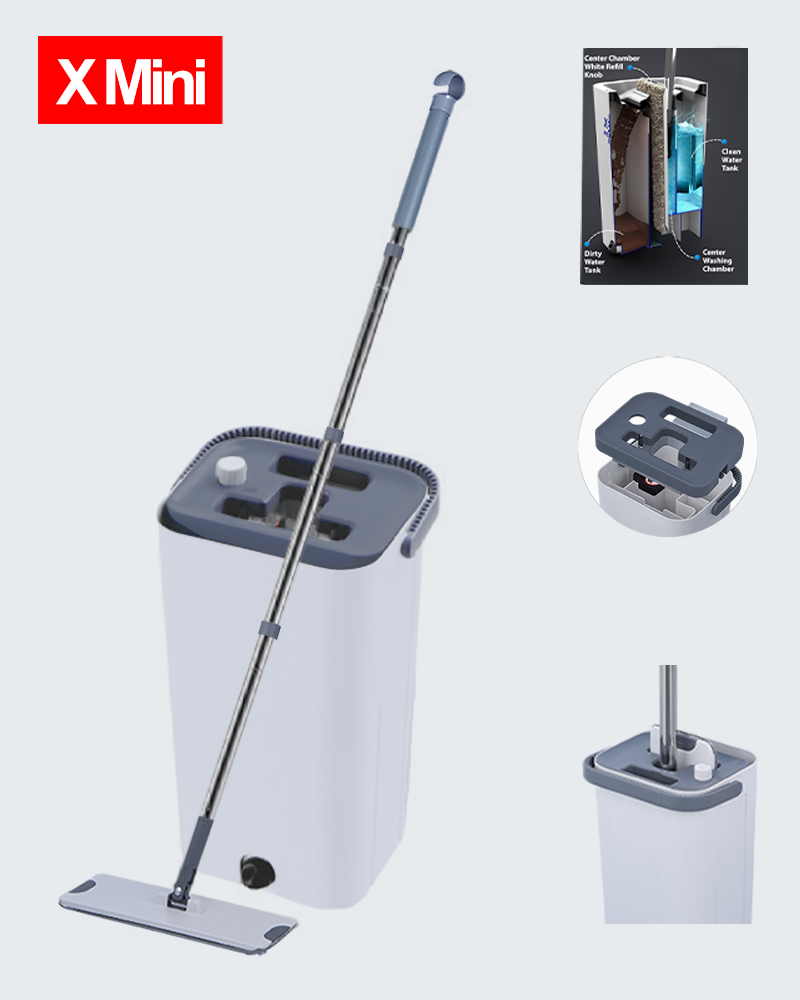Content
Flat mop buckets with no-hand-washing designs have become a staple in modern households, solving the hassle of manual wringing while saving space. To pick a practical set that balances cleanliness, convenience, and storage, focus on core features like wringing mechanism, capacity, and structural design. Here’s a detailed breakdown.
1. Core Focus: Wringing Mechanism Determines No-Hand-Washing Experience
The wringing system is the key to a "no-hand-washing" flat mop bucket, directly affecting cleaning efficiency and labor-saving performance.
- Roller Roller extrusion type: Built-in parallel rollers that squeeze water out of the mop pad when pushed down. It works well for most flat mop pads and requires minimal force, suitable for daily household use.
- Centrifugal spinning type: Uses centrifugal force to spin-dry the mop pad. Simply place the mop into the bucket and step on a pedal to activate—dries faster and more thoroughly, ideal for large spaces or frequent mopping.
- Scraping plate type: Features a rigid or flexible scraping plate that removes dirt and water from the pad. It’s lightweight and easy to operate but works best with thinner, microfiber pads.

2. Storage-Friendly Design: Key to Saving Space
For small apartments or crowded storage areas, the bucket’s size and foldable features are crucial for practicality.
- Foldable structure: Look for buckets with collapsible bodies or detachable components. When not in use, they can be folded flat or disassembled to reduce storage space by 50% or more.
- Compact size with vertical storage: Choose buckets with a slim profile (width under 25cm) that can fit into narrow gaps beside cabinets or behind doors. Some designs also include hanging hooks for vertical storage on walls.
- Integrated mop holder: Many popular sets combine the bucket with a mop stand, allowing the mop to be stored upright in the bucket—keeping floors dry and avoiding clutter.
3. Practical Capacity: Balance Between Usage and Portability
The bucket’s capacity should match your cleaning needs without being too heavy to carry.
- 5–6L capacity: Suitable for small to medium-sized homes (50–80㎡). It’s lightweight and easy to carry around, while providing enough water for 2–3 rounds of mopping.
- 7–8L capacity: Ideal for larger spaces (80–120㎡). It reduces the need to refill water frequently, but ensure the bucket has a comfortable handle for easy transportation.
- Avoid oversized capacities (over 10L) unless cleaning a very large area—they are bulky and hard to store, defeating the "easy storage" purpose.
4. Additional Practical Features to Enhance Usability
Beyond the core functions, extra details can make the flat mop bucket set more user-friendly.
- Anti-splash design: A bucket with a raised rim or splash guard prevents water from spilling onto floors during wringing, keeping the cleaning process neat.
- Detachable dirty water tank: Separates clean and dirty water, avoiding reusing dirty water and ensuring a more thorough clean.
- Durable material: Opt for high-quality PP plastic that is thick, impact-resistant, and not easily deformed. Avoid thin, brittle plastics that crack with frequent use.
- Mop pad compatibility: Ensure the bucket is compatible with common flat mop pad sizes (28–35cm) for easy replacement. Some sets include extra pads for longer use.

 English
English Español
Español 中文简体
中文简体












